Expert proctology support to ensure safe, effective, and lasting recovery.
Prompt treatment for anal fistula is vital as it does not heal on its own. At HeptaCare Health , you can get treatment for anal fistula from specialized doctors with facilities like advanced laser treatments, medical care coordinators, and post-surgery care.
Happy Patients
Disease
Hospitals
Cities
An anal fistula is an abnormal connection or tunnel that forms between the anal canal (the end portion of the digestive tract) and the skin around the anus. It typically develops as a result of an infection or an abscess (a collection of pus) in the anal glands, which are small glands located near the anus.
Anal fistulas can cause various symptoms, including persistent pain and discomfort around the anus, swelling, redness, tenderness, and the presence of discharge or pus. Other symptoms may include itching, fever, and general malaise.
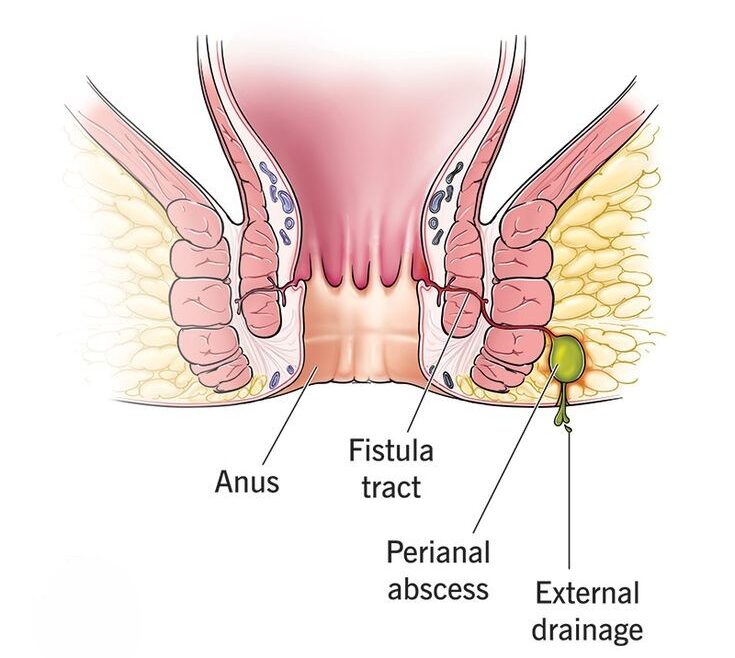
There are several types of anal fistulas, classified based on their location and severity.
Intersphincteric Fistula: This type occurs between the internal and external sphincter muscles of the anus. It’s the most common type and usually results from an infected anal gland.
Transsphincteric Fistula: This fistula passes through both the internal and external sphincter muscles. An abscess infection typically causes it.
Suprasphincteric Fistula: This fistula extends above the internal sphincter muscle and often stems from a spreading abscess infection.
Extrasphincteric Fistula: This type goes beyond the external sphincter muscle and usually develops from a chronic infection.
You should seek medical attention if you suspect an anal fistula, as it can cause discomfort and lead to complications if left untreated.
A successful laser anal fistula surgery means the anal wound heals completely without leaving any residual tract, external openings, or perianal discharge.
Doctors often recommend laser surgery as the most effective treatment for anal fistulas. However, the condition may still return after surgery for several reasons. Here are some common causes of recurrence:
Poor Hygiene of the Surgical Site: Failing to keep the surgical area clean exposes it to harmful bacteria and germs. This contamination can lead to infections and may prevent proper healing of the fistula. Therefore, it’s essential to maintain hygiene around the anal wound after surgery.
Failure to Follow Postoperative Instructions: Your anorectal specialist will provide specific guidelines for recovery. Following these instructions carefully can help prevent complications. Ignoring them may delay healing and increase the risk of recurrence.
Ongoing Preoperative Risk Factors: Surgery alone may not be enough to prevent recurrence. If you don’t address the lifestyle factors that caused the fistula initially, it might return and require further treatment.
An anal fistula is a medical condition characterized by an abnormal tunnel connecting the anal canal to the skin surrounding the anus. The diagnosis of anal fistula typically involves a physical examination and a review of the patient’s medical history.
During the physical examination, the doctor will perform a visual analysis of the anus and surrounding area to look for any signs of inflammation, swelling, or discharge.
The doctor may also perform a digital rectal exam to check for the presence of any abscesses. The doctor may order additional tests to confirm the diagnosis, such as an MRI or a fistulogram, which involves injecting a dye into the anal fistula to help identify its exact location and extent.
It is important to seek medical attention if you suspect you may have an anal fistula, as early diagnosis and treatment can help prevent complications and improve outcomes.
There are two approaches to treating anal fistula, i.e. surgical or non-surgical.
Here are some surgical treatment approaches for anal fistula.
Fistulotomy is a surgical procedure used to treat anal fistulas. The procedure involves cutting the fistula and removing the infected tissue. The goal of the surgery is to drain the abscess and prevent recurrence. A fistulotomy is typically performed under general anesthesia and can be done as an outpatient procedure.
Recovery time varies but typically takes a few weeks. Complications can include bleeding, infection, and fecal incontinence. Overall, fistulotomy is an effective treatment option for anal fistulas, with a high success rate and low recurrence rate.
This surgical technique involves tying the fistula tract near the internal anal sphincter muscle. The LIFT procedure involves making an incision in the skin near the fistula and then using a special tool to locate the internal opening of the fistula. The internal opening is then closed off with a suture, which helps to prevent the fistula from recurring.
The LIFT procedure is generally considered to be a safe and effective treatment for anal fistulas, with a low risk of complications. However, it may not be suitable for all patients, and the decision to undergo the procedure should be made in consultation with a qualified healthcare provider.
Seton placement refers to a medical procedure where a doctor places a small piece of plastic or rubber inside the body to help drain fluids. Doctors commonly use this technique to drain abscesses, cysts, or other fluid collections. During the procedure, the doctor makes a small incision and inserts the Seton under the skin.
After insertion, they tie the Seton to form a loop that allows for continuous drainage. Since the procedure is minimally invasive, doctors often perform it in an outpatient setting. Most patients experience minimal risks or complications. Proper post-procedure care helps ensure successful healing.
The advancement flap procedure is a surgical technique used to repair defects or wounds in the skin. This method involves cutting a flap of skin adjacent to the wound and advancing it across the defect, closing the wound.
The procedure is commonly used for reconstructive surgery in areas such as the face, neck, and hands. Advancement flaps are a reliable and effective way to repair skin defects caused by trauma, cancer, or congenital malformations.
The procedure is usually performed under local anesthesia and can be completed in an outpatient setting, with patients typically returning to normal activities in a few days.
During laser surgery for anal fistula, the patient is typically placed under anesthesia. A small probe is then inserted into the fistula tract, guided by an endoscope or other imaging techniques.
The laser energy is delivered through the probe, targeting and destroying the tissues along the fistula tract. The laser energy effectively seals off the fistula tract by creating a controlled thermal injury.
Non-Surgical Treatments For Anal Fistula
This is an endoscopic procedure where fibrin glue is injected into the fistula tract to seal it and reduce any risk of infection or recurrence. This procedure can often be done without any incisions being made, which makes it less invasive than other surgical treatments for anal fistulas.
It is important to note that non-surgical treatment is not a recommendable option, as a fistula rarely heals without surgical intervention. Surgery is always the best treatment for anal fistula.
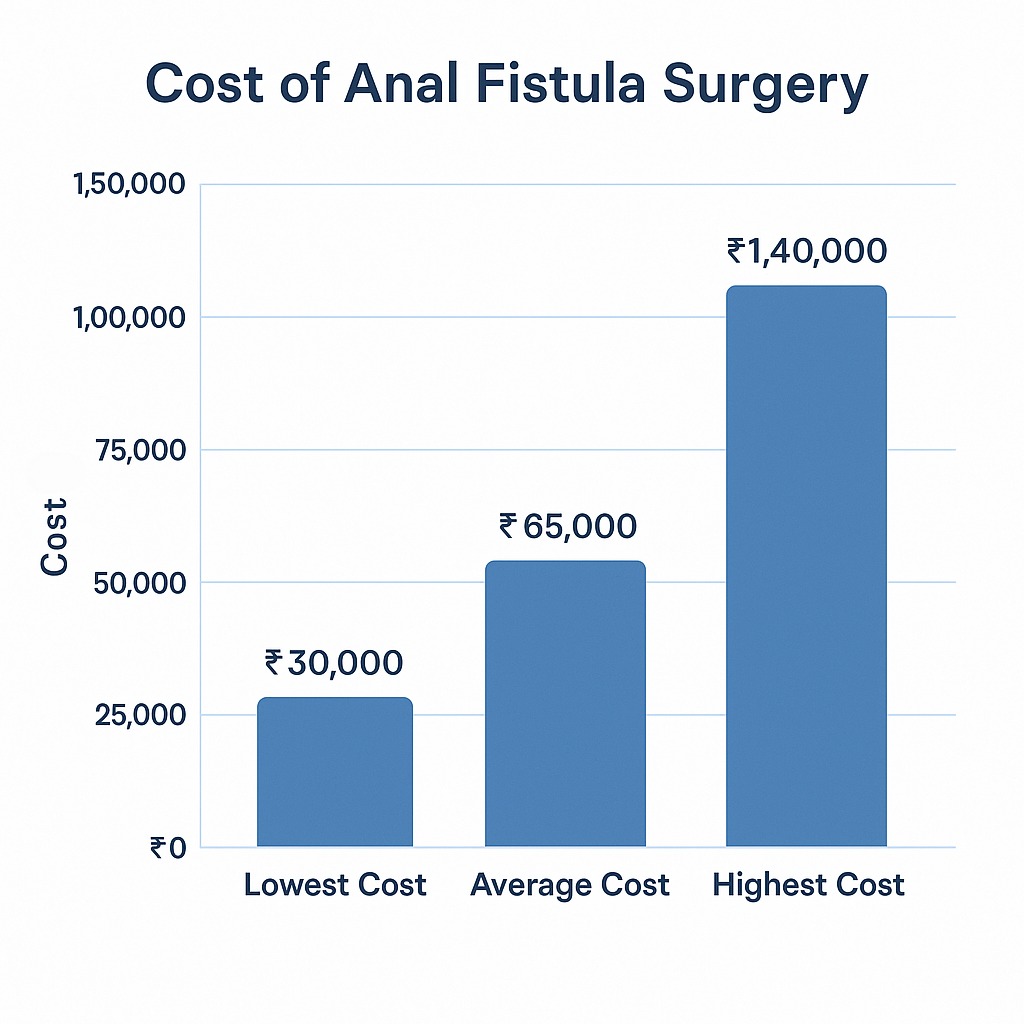
Minimally Invasive
The surgeon makes small incisions and uses a high-intensity, medical-grade laser to destroy the fistula tract. The laser’s high operating temperature minimizes bleeding and infection risks.
Shorter Recovery
Because this procedure remains minimally invasive, most patients recover within 2–6 weeks. Many resume normal activities in just 1–2 weeks.
Fewer Complications
Small incisions virtually eliminate excessive bleeding and infection.
Tissue Preservation
Precise laser cuts spare surrounding tissue, which speeds healing, reduces complications, and improves cosmetic results.
Outpatient Procedure
Surgeons complete the procedure in 30–40 minutes. Patients leave the same day once the team confirms there are no immediate complications.
Learn the Procedure: Ask your doctor what to expect and how to prepare.
Follow Instructions: Adhere to dietary restrictions, medication guidelines, and other preoperative advice from your surgeon.
Arrange Transportation: Because anesthesia prevents you from driving, have a companion drive you home.
Plan Recovery Time: Request time off work and clear obligations to rest.
Quit Smoking: Smoking impairs healing and raises complication risks.
Stay Hydrated: Drink plenty of water to prevent preoperative constipation.
Share Your Medical History: Tell your doctor about any allergies or prior reactions to anesthesia.
Timeline
Laser Surgery: Expect 2–6 weeks to heal fully. Follow your doctor’s postoperative care plan.
Open Surgery: Typically takes 4–6 weeks to recover.
Medications & Home Remedies: Recovery varies; you may need several weeks or months. Consult your physician before starting home treatments.
What to Expect
You will rest in a recovery area under observation immediately after surgery.
Minor bruising, swelling, or bleeding may occur but usually resolves on its own.
Schedule follow-up visits so your surgeon can monitor healing and address concerns.
Recovery Tips
Follow all postoperative instructions.
Take prescribed medications on schedule.
Keep the wound clean and dry.
Avoid strenuous activities for at least one week.
Eat a balanced diet rich in vitamins and lean proteins.
Stay hydrated and avoid alcohol or caffeine.
Attend all follow-up appointments.
Diet: Eat high-fiber foods (whole grains, fruits, vegetables) and lean proteins. Drink plenty of fluids.
Hygiene: Use mild soap and keep the area clean and dry. Sitz baths (15–20 minutes, 2–3 times daily) soothe discomfort.
Activity: Resume light exercise like walking, but avoid heavy lifting until cleared by your doctor.
Bowel Health: Prevent constipation with fiber, fluids, and stool softeners if needed.
Although generally safe, any surgery carries risks:
Pain and Discomfort
Infection
Bleeding
Incontinence (rare)
Recurrence of the Fistula
Allergic Reactions to anesthesia or medications
Discuss these risks with your surgeon and follow postoperative care guidelines to minimize complications.
Cost Range in India: Laser surgery typically costs between INR 25,000 and INR 60,000, depending on hospital fees, surgeon fees, anesthesia, and diagnostic tests.
Insurance: Most health plans cover anal fistula surgery. Consult your provider and, if needed, enlist HeptaCare Health’s insurance team to assist with claims.
Consult your doctor before using any of these
Sitz Baths: Warm water baths relieve discomfort.
Ginger Tea: Steep sliced ginger in hot water to reduce inflammation.
Turmeric Milk: Mix turmeric powder with warm milk to leverage its anti-inflammatory properties.
Topical Oils: Apply diluted tea tree or oregano oil for their antiseptic effects.
Aloe Vera: Use gel topically to soothe and promote healing.
Decreased pain and swelling
Reduced or no discharge
Improved bowel movements
Absence of infection signs (redness, warmth, pus)
If symptoms persist or worsen, contact your healthcare provider promptly.
Leaving a fistula untreated can lead to chronic abscesses, sepsis, peritonitis, fecal incontinence, chronic wounds, and—rarely—anal cancer. Seek treatment early to avoid severe complications.
Fistulotomy (INR 25,000–60,000)
LIFT Procedure (INR 30,500–86,950)
Seton Placement (INR 20,500–55,000)
Advancement Flap (INR 32,500–105,000)
Each procedure carries unique benefits and recovery timelines. Discuss the best choice with your surgeon.
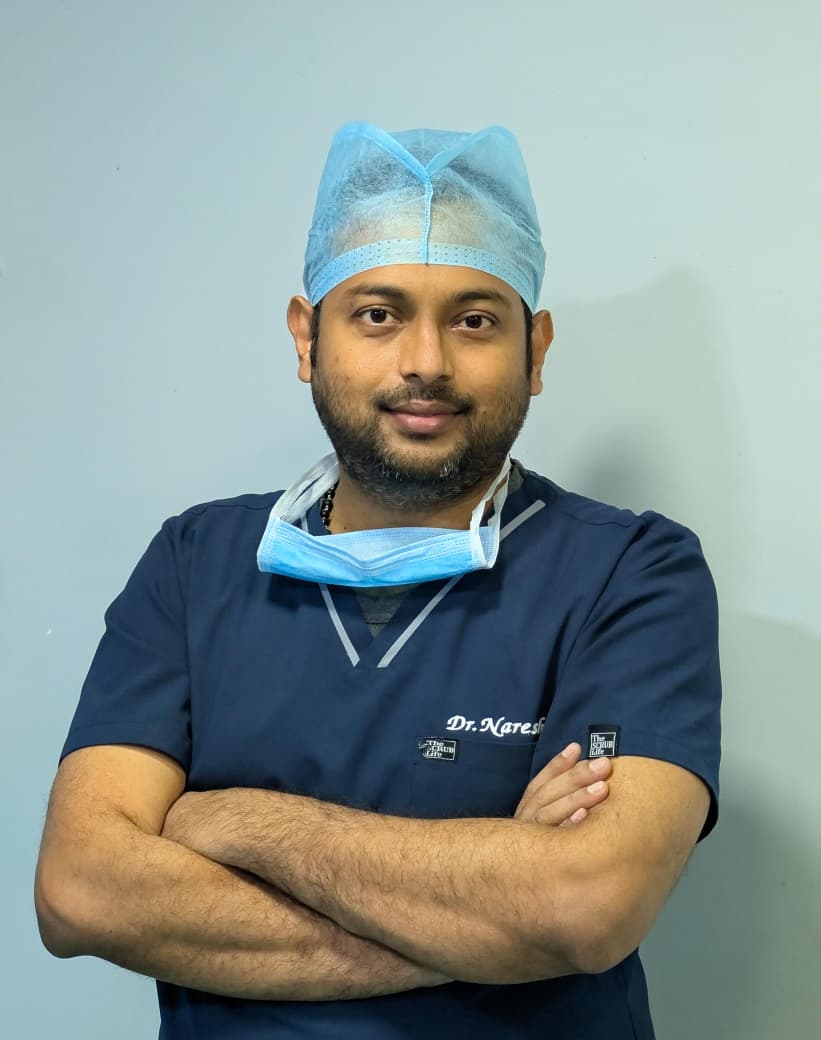

Based on 7721 Recommendations | Rated 4.68 Out of 5
Happy Patients
Clinics
Cities
Surgeries
Doctors
Hospitals

Advanced, non-surgical care for painful anal fissures with quick relief and minimal downtime.
Expert proctology support to ensure safe, effective, and lasting recovery.

Get relief from painful piles with advanced laser treatment.
Minimally invasive, no stitches, same-day discharge…

Heal painful anal fissures with advanced, non-surgical care.
Quick relief, minimal downtime, expert proctology support…
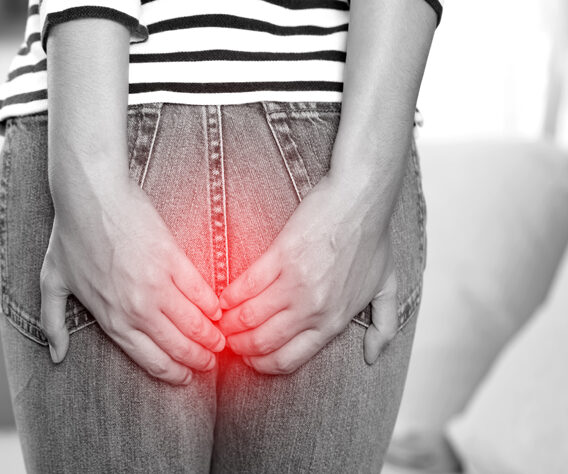
Get permanent relief from pilonidal sinus with laser surgery.
Painless procedure, quick healing, same-day discharge.

Advanced treatment for rectal prolapse by expert surgeons.
Safe procedure, minimal pain, long-term relief.
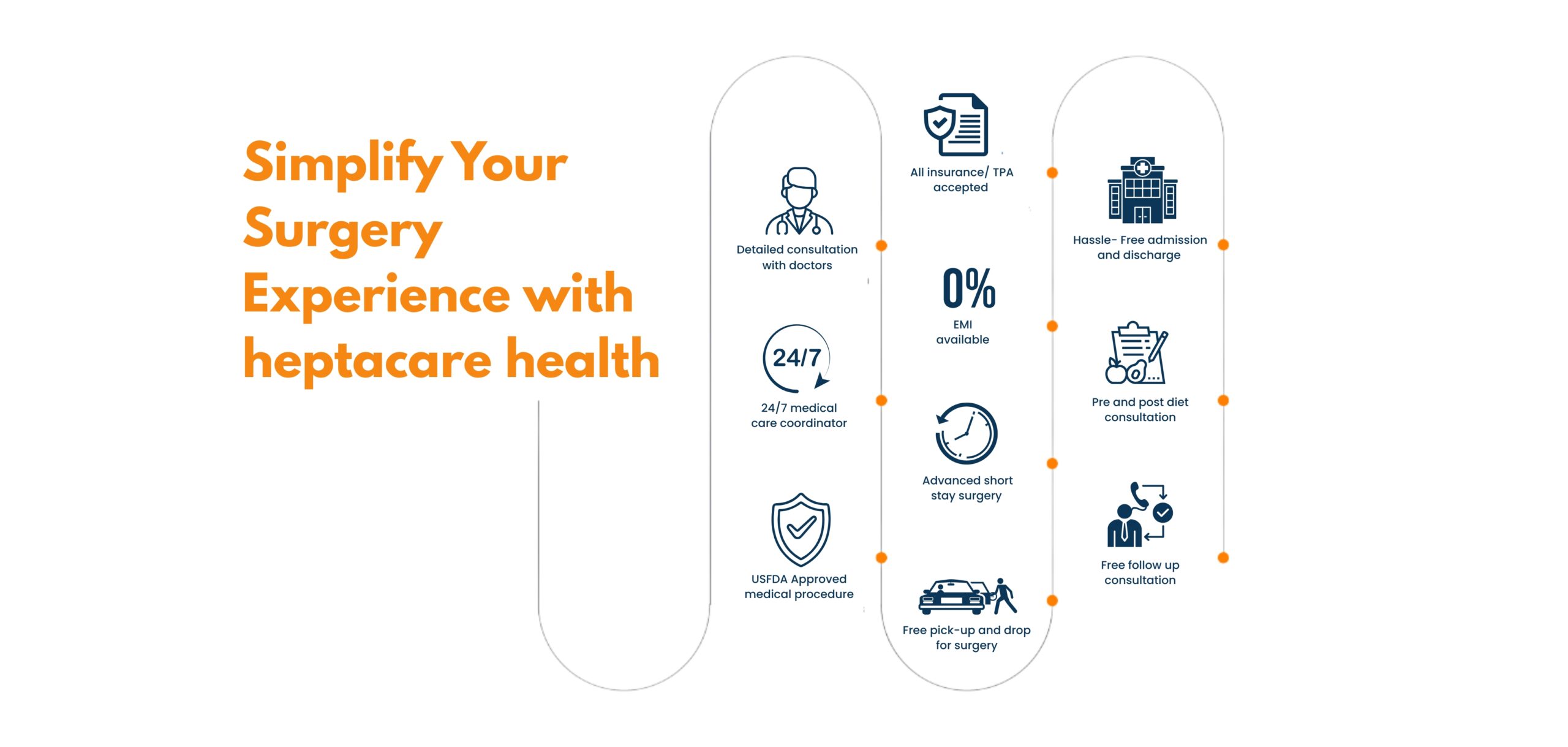
Common symptoms include itching, pain during bowel movements, bleeding, and swelling around the anus.
Yes, most health insurance plans cover fistula surgery, including laser treatment.
Eat a high-fiber diet, drink water, avoid straining during bowel movements, and exercise regularly.
It’s a safe and effective method with minimal side effects and faster healing than traditional surgery.
● fistula laser surgery cost in Vizag ● low-cost fistula surgery in Hyderabad ● cashless fistula treatment near me ● painless fistula surgery in Vijayawada ● fistula treatment with insurance in Vizag ● fistula removal surgery cost in Hyderabad ● fistula operation packages in Vijayawada ● affordable fistula treatment near me ● fistula laser treatment clinic in Hyderabad ● fistula doctor consultation charges in Vizag ● best fistula surgery cost in Vijayawada ● fistula treatment hospital near me ● fistula laser operation price in Hyderabad ● low-cost fistula laser treatment in Vizag ● fistula removal cost near me ● fistula treatment with EMI in Vijayawada ● fistula surgery specialist near me ● fistula surgery packages in Hyderabad ● fistula treatment clinic near me ● fistula laser surgery near me
Disclaimer: **The result and experience may vary from patient to patient.. ***By submitting the form or calling, you agree to receive important updates and marketing communications.
Getting an accurate diagnosis can be one of the most impactful experiences that you can have.

cure with care
Copyright © 2025. All rights reserved.
Consult with our expert surgeon for more than 50+ diseases
Happy Patients
Hospitals
Cities